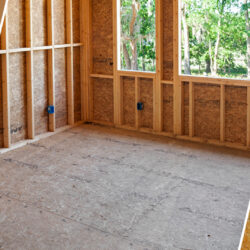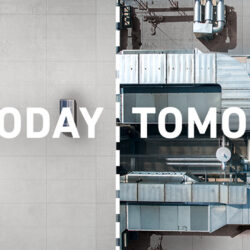For more reasons than one, hospitals have a rather dour reputation. Their traditionally cold, impersonal aesthetic – designed more for the convenience for medical staff than the comfort of patients – has done little to inspire recovery from serious illness. Thankfully, over the past few years, architects and designers have begun to design new hospitals with a warm, welcoming look and feel that is more reminiscent of resort hotels than the sterile institutions of old. These modern hospitals are attracting patients in droves, making them extremely profitable for their owners. In fact, according to a 2010 study conducted by The National Bureau of Economic Research, the University of California and the RAND Corporation, hospitals with hotel-like design aesthetics and amenities are overwhelmingly preferred by patients over older hospitals, even when those facilities are considered clinically superior by medical professionals. But it turns out that these new hospitals don’t just help to make patients happier and more comfortable during their stay – they may help to improve their prognosis as well.
Room service. In-room massages. Improved landscaping. Is it possible that beyond making a modern hospital more luxurious, these comforts can also improve patient outcomes?
According to some doctors and researchers, the answer is yes. In a New York Times article, Robert G. Riney, chief operating officer of the Henry Ford Health System, discusses the ways that the resort-style amenities at its Henry Ford West Bloomfield Hospital outside Detroit help patients relax and “focus on getting better.”
When discussing the hospital’s round-the-clock meal service, which was introduced in 2009, he explains that, “If someone is feeling poorly after a tough procedure or taking some medication, they aren’t going to eat just because it’s mealtime, [which means] they won’t get the nutrition they need.” The ability to order a meal of their choice when they actually feel like eating “[is] much better for their recovery.”
And when the Children’s Hospital of Pittsburgh of UPMC introduced theme-based waiting room designs with multi-sensory distractions including music, videos and aromatherapy to help calm pediatric patients waiting to receive imaging procedures and radiology treatments, their need for sedative drugs fell by 99 percent.
Hospital designers are also reconsidering their approach to landscape design.
Gardens – a hospital mainstay for centuries that were considered unnecessary for much of the 20th century – are making a comeback based on an abundance of research showing that they can help patients get well more quickly. The movement actually began in the mid-1980s after the publication of an influential study by environmental psychologist Roger Ulrich, now a professor at Texas A&M University. After reviewing the medical records of patients recovering from gallbladder surgery at a hospital in suburban Pennsylvania, he and his team found that the patients with leafy trees outside their windows healed faster, had fewer complications after surgery, and needed substantially less pain medication than those whose windows looked out onto a brick wall. In the past 30 years, additional supports Ulrich’s initial findings, including his follow-up study published in 2002, Health Benefits of Gardens in Hospitals.
As a result, well-designed hospital gardens in warm climates and indoor atriums in cold weather regions are incorporated into most new hospital designs to provide patients with exposure to sunlight, foliage and animals such as birds and fish to help them relax and rejuvenate.

Finally, the design of a hospital’s buildings themselves can also have a positive impact on the outcomes of its patients.
Hospital-acquired infections (HAIs) are a major problem in the United States.
According to the Centers for Disease control, on any given day, about one in 25 hospital patients has at least one healthcare-associated infection. Since 2011, when HAIs claimed the life of 75,000 people in the U.S., private rooms became standard features of new hospital construction, particularly in intensive care units (ICUs), as a means of preventing disease transmission among patients. The change was inspired by the results of study of two hospitals in Montreal, Canada, conducted in 2002 and published in 2011. When the hospitals reconfigured their ICUs from shared wards to private rooms, HAIs decreased by more than 50 percent, while the length of the average patient stay dropped by 10 percent.
Next-generation materials and wall coatings are also being incorporated into new hospital construction.
Using Georgia-Pacific’s DensArmor Plus® Interior Panels provide moisture and mold resistance in ultra-high traffic areas in hospitals and healthcare facilities. Incorporating these interior panels in hospitals provides protection from incidental moisture and resists mold growth due to their enhanced moisture and mold resistant properties. Moisture problems in hospitals can pose health risks to occupant health, so using these interior panels with dense, moisture resistant core and fiberglass mats that replace paper facings on both sides can help reduce mold and moisture problems that can potentially lead to serious health effects. Next generation wall coatings help reduce and even eliminate bacteria, viruses, mold, mildew and fungi that can both lead to HAIs and harm indoor air quality (IAQ). The latest “self-cleaning” antimicrobial wall coatings that bind to surfaces on the molecular level were shown to be extremely effective in creating a hostile microscopic environment for pathogens, making it difficult for infection-causing microbes to survive. And coatings designed to reduce unpleasant smells actually neutralize the odor-causing compounds by attacking them at the molecular level and breaking them down on contact. This helps keep rooms and corridors smelling fresh without the need for harsh cleaners, detergents and disinfectants that can release chemicals that harm IAQ.
And, smart devices are being incorporated into patient rooms that both help improve patient comfort and assist staff in providing the best possible care.
Generally integrated into a touch pad with a Graphical User Interface (GUI), these devices use wireless technologies including Wi-Fi and Bluetooth so patients can control the room’s lights, window blinds, television sets and beds as they please, freeing up nurses and other hospital staff to perform their essential duties. Smart lighting and window blinds can even be programmed to darken the room at scheduled times to help support patients’ circadian rhythm, which can be thrown off in a hospital setting, so they get the rest they need to recuperate.
While traditional hospital design focused on the technical needs of doctors and staff, hospitals have more recently come to understand that the needs of its patients deserve equal attention.
As a result, new hospitals are being built with a focus on design features and amenities that will help them have a more comfortable stay and get well more quickly. And what’s good for their patients is also good for the hospitals themselves, as those that have adopted modern design ideals have benefited from increased revenues, reduced mortality and increased patient satisfaction as a result.
This article is intended solely as general information. Ultimately, the design and detailing of any project, assembly or system is the responsibility of a professional, and all projects must comply with applicable building codes and standards. GP Gypsum disclaims any responsibility or liability for the architecture, design, engineering or workmanship of any project, assembly or system.









